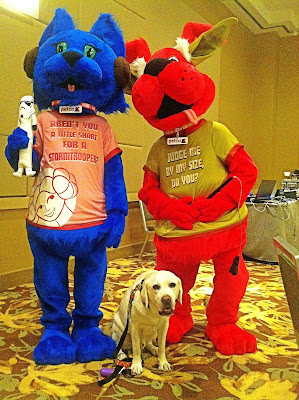Book Review: Pukka’s Promise by Ted Kerasote
by Rebecca Randolph, guest blogger (and Garth’s mom)
Houghton Mifflin Harcourt, the publisher of Pukka’s Promise, provided me with a free copy of this book, however the opinions expressed in this review are my own. I received no other compensation for this review.
Pukka’s Promise has been a very difficult book for me to review. I read it back in February and have been mulling it over for months. It left me questioning much of what I thought was true about how best to care for my dog. It’s definitely not the kind of light summer reading you take to the beach. It’s the kind of book you need to read and think about - but if you have dogs in your life, you definitely need to read it.
Ted Kerasote is my idol. He lives a life I would love to live (minus the elk-hunting and gutting) and provides his dogs with a life I would love to be able to provide my dogs. His book Merle’s Door inspired me to give my dog Garth a better and more enriched life than I had provided my previous dog Jake. I’ve read Merle’s Door three times, and I think it’s one of the greatest books ever written about a dog. So when I began Pukka’s Promise, I was expecting another Merle’s Door. But Pukka’s Promise is something else entirely.
In Pukka’s Promise, Ted Kerasote attempts to answer the question “how can our dogs live longer?” This is one of those questions that I would have thought unanswerable, but it’s not. I was shocked to learn that commonly-advocated practices may be detrimental to our dogs’ health and may actually be affecting their longevity. Too-frequent vaccinations, spaying and neutering (especially at a very young age), feeding poor quality dog-food, and exposure to environmental toxins may all be factors in shortening our dogs’ lives. Fortunately we have control over many of these factors. Such factors include:
Vaccinations
How could something I’m doing for my dog’s health such as yearly vaccinations be harmful? Vaccinations save lives, right? Well, they do, but Kerasote’s research suggests that we may be over-vaccinating dogs, vaccinating every year when it might not be necessary, vaccinating for the same diseases everywhere - even in climates where those diseases don’t exist.
Spaying and Neutering
Have we been pursuing the goal of preventing unwanted litters at the risk of our dogs’ health? Are intact dogs healthier because they retain their body’s ability to produce beneficial hormones? Do the health benefits of retaining beneficial hormones outweigh the health benefits of spaying and neutering? Are there birth control alternatives for dogs that are healthier than spaying and neutering? Absolutely we need to prevent unwanted litters, but why aren’t less invasive, less expensive, and less time-consuming procedures (vasectomies, hysterectomies, and tubal ligations) used? Such procedures would allow dogs to retain their testicles and ovaries so these organs would continue to produce hormones beneficial to a dog’s health.
I’ve always been an advocate of spay/neuter programs, and am extremely resistant to any suggestion that spay/neuter should not be zealously promoted. But what if it negatively affects the health of our dogs? What if there are better options for preventing unwanted pregnancy in dogs?
Dog Food
Kerasote also discusses the way we feed our dogs. He provides the history of kibble production and describes his tours of rendering plants. He discusses feeding a raw diet and other options and ends up choosing for Pukka a combination of wild game, commercially prepared raw food, and vegetables. After reading Pukka’s Promise, I’ve been looking at dog food ingredients much more closely and experimenting with alternatives to kibble (much to Garth’s delight). I’ve been reading more and more about different dog diets - from raw, to dehydrated, to freeze-dried, to home-cooked meals - and have realized that dogs, like humans, can benefit by eating whole foods instead of processed kibble.
In addition to dealing with these heavy topics, Kerasote writes about his search for Pukka, Pukka’s puppyhood, and teaching Pukka about the world and the things he needs to know as a dog in Kelly, Wyoming. I enjoyed these sections of the book immensely. Kerasote is extremely observant and sensitive to Pukka’s feelings. When Pukka gets a new crate and bedding that belonged to another dog, and for the first time cries in the crate, Kerasote realizes that there’s something about that crate that Pukka doesn’t like. After Kerasote thoroughly scrubs the crate and cleans the bedding, Pukka is very comfortable there.
At times it seemed like I was reading two different books -- one a story of Pukka’s early years, the other a book about the factors affecting dogs’ longevity. I’m not saying this format didn’t work, it just didn’t work as well as it did in Merle’s Door, which included wonderful stories of Merle’s life as well as interesting sections on dog history and behavior.
Like Kerasote’s other books, Pukka’s Promise is extremely well-written and easy to read. It’s extensively researched, with 49 pages of notes at the end. If I want to research more on any of the topics discussed in the book, the notes will be very helpful.
I highly recommend Pukka’s Promise - but be aware that you (like me) may be resistant to some of Kerasote’s findings and conclusions. I think it would be a rare person who didn’t learn something (or quite a bit) from this book about helping dogs to live healthier and longer lives.








































.JPG)









